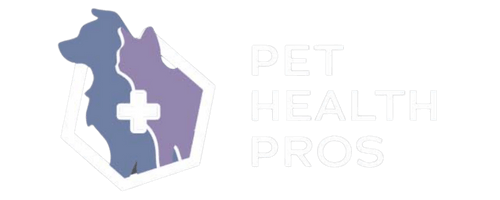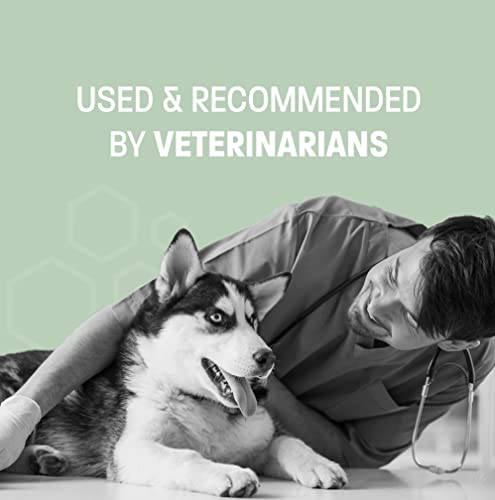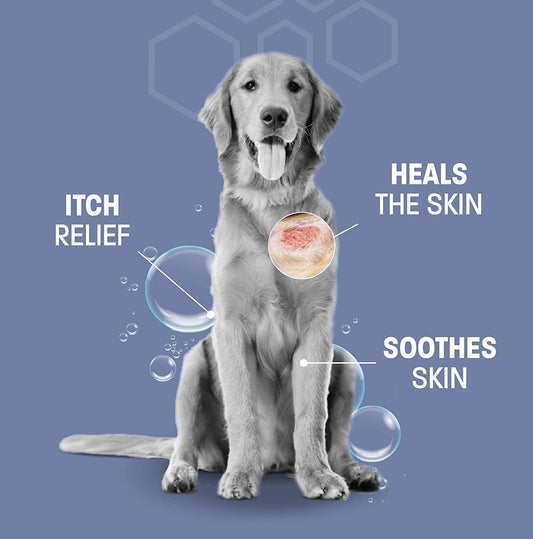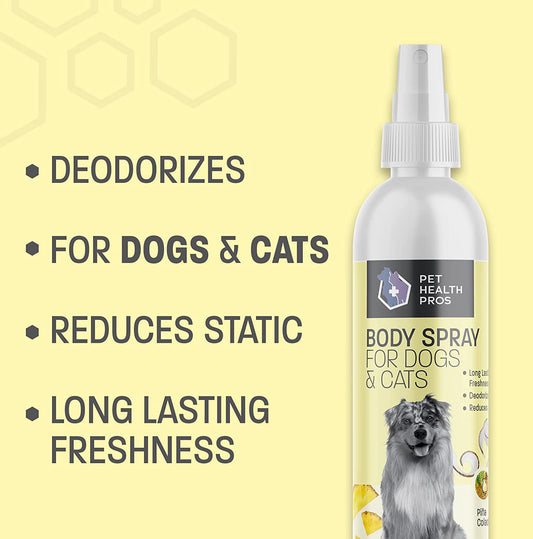Getting a dog is a big step, and it's not just about the cuddles and playtime. Dogs need a lot of attention and care to live happy, healthy lives. Whether you're a first-time dog owner or have had dogs before, there's always something new to learn about taking care of them. From feeding them right to making sure they get enough exercise, it's all part of the job. Here's a look at some key things every dog owner should know.
Key Takeaways
- Understand your dog's basic needs like food, exercise, and water.
- Create a safe and comfy space for your dog at home.
- Keep up with grooming to make your dog look and feel good.
- Regular health check-ups are a must to catch any issues early.
- Training and socializing help your dog behave well and get along with others.
Understanding Your Dog's Basic Needs
Taking care of a dog is a big responsibility, and understanding their basic needs is the first step in providing a loving and healthy environment for them.
Providing a Balanced Diet
A good diet is the foundation of your dog's health. Dogs need a mix of proteins, carbohydrates, fats, vitamins, and minerals to stay healthy. It's not just about filling their bowl with any food; quality matters. Consult with your vet to choose the right food that suits your dog's breed, age, and activity level. Remember, feeding your dog table scraps can be harmful, as they might contain ingredients that are not safe for dogs.
Ensuring Regular Exercise
Exercise is crucial for your dog's physical and mental health. Different breeds have varying energy levels and exercise needs, so it's important to tailor activities to your dog's requirements. A daily walk, playtime in the yard, or a game of fetch can work wonders. Not only does exercise keep them fit, but it also helps prevent behavioral issues caused by boredom and pent-up energy.
Maintaining Proper Hydration
Keeping your dog well-hydrated is as important as feeding them. Dogs need constant access to fresh, clean water. On hot days or after exercise, they might need more water than usual. Watch out for signs of dehydration like dry gums or excessive panting.
"Hydration is key to maintaining your dog's health and energy levels. Always ensure their water bowl is full and clean."
By focusing on these basic needs, you set the stage for a happy and healthy life for your furry friend. For more insights on dog care, including debunking common myths about their health and behavior, check out our section on dog health misconceptions.
Creating a Safe and Comfortable Environment
Choosing the Right Bedding
When it comes to bedding, comfort is key for your dog’s happiness. Look for a bed that supports their joints, especially if they’re older or have arthritis. Memory foam beds are a popular choice for this reason. Consider the size of your dog and ensure the bed is large enough for them to stretch out fully. Additionally, think about the bed's location. It should be in a quiet, draft-free corner where your dog can relax without disturbances.
Dog-Proofing Your Home
Dog-proofing your home is a bit like child-proofing. You need to get down to their level and see what they see. Keep small objects out of reach to prevent choking hazards. Secure cabinets with cleaning supplies or food that could be harmful if ingested. Electrical cords should be tucked away or covered to prevent chewing. Use baby gates to block off areas where your dog shouldn’t go.
Setting Up a Designated Space
Every dog benefits from having their own space where they can retreat. This could be a specific room or a cozy corner. Ensure this area is stocked with their bed, toys, and maybe a blanket that smells like you for comfort. Having a designated space helps your dog feel secure and can reduce anxiety. It's their little sanctuary where they know they can relax.
Grooming Essentials for Your Dog
Brushing and Bathing Techniques
Keeping your dog clean and well-groomed is important for their health and happiness. Regular brushing helps remove loose fur, dirt, and prevents matting. Depending on your dog's coat type, you might need to brush daily or a few times a week. Bathing is another key part of grooming, but don't overdo it – too much bathing can strip natural oils from their skin. Use a dog-friendly shampoo and make sure to rinse thoroughly to avoid any residue that might cause irritation.
Nail and Dental Care
Nail trimming is essential but often overlooked. Long nails can cause discomfort or even lead to injury. Aim to trim your dog's nails every 3-4 weeks, but be cautious not to cut too close to the quick. For dental care, brushing your dog's teeth several times a week can help prevent plaque buildup and gum disease. There are special toothbrushes and toothpastes designed for dogs that make this task easier and more effective.
Dealing with Shedding
Shedding is a natural process for dogs, but it can be managed with the right tools and techniques. Regular grooming can significantly reduce the amount of loose fur around your home. Consider using a de-shedding tool or a grooming glove to help manage shedding, especially during peak seasons like spring and fall. Additionally, a healthy diet can contribute to a shinier coat and less shedding.
Grooming isn't just about looks; it's a chance to check your dog for any unusual lumps, bumps, or skin issues. Regular grooming sessions can help you catch potential health problems early.
Taking the time to groom your dog not only keeps them healthy but also strengthens the bond between you and your furry friend. It's a win-win for both of you!
Health and Wellness Checks
Keeping your dog healthy involves more than just feeding and exercise. Regular health checks are a must to catch any issues early on.
Scheduling Regular Vet Visits
First off, make sure you're booking regular vet visits. These check-ups are crucial. Your vet can catch things you might miss, like dental issues or early signs of disease. Puppies and older dogs might need more frequent visits, so talk to your vet about what's best for your pet.
Recognizing Signs of Illness
Dogs can't tell us when they're feeling off, so it's up to us to notice the signs. Keep an eye out for changes in appetite, energy levels, or behavior. If your dog is suddenly drinking a lot more water or seems lethargic, it might be time to call the vet. A quick response can make all the difference.
Vaccination and Preventative Care
Vaccinations are your dog's first line of defense against many serious diseases. Make sure your dog's shots are up to date, and ask your vet about any additional vaccines that might be necessary based on your location or lifestyle. Don't forget about preventative treatments for fleas, ticks, and heartworms, too.
Regular health checks are an investment in your dog's long-term happiness and well-being. They might not be able to say "thank you," but their wagging tail will tell you everything you need to know.
For personalized care and advice, consider using Pet Genius, an AI-powered assistant that helps manage your pet's health and wellness with ease.
Training and Socialization
Basic Obedience Training
Training your dog is like teaching a kid manners. Start with basic commands like sit, stay, and come. These are the building blocks of good behavior. Proper training is essential for puppies to grow into well-behaved companions. Use treats or toys as rewards to make learning fun. Consistency is the key here; practice these commands daily so your dog knows what's expected.
Socializing with Other Dogs
Socialization isn't just about meeting other dogs; it's about getting your pup comfortable with different environments and people too. Take your dog to parks, pet-friendly stores, or even doggy daycare. This helps them learn how to behave around others and reduces anxiety. Remember, a well-socialized dog is less likely to develop behavioral issues.
Addressing Behavioral Issues
Sometimes, dogs develop habits that aren't great, like chewing furniture or barking too much. It's important to address these issues early. Identify the cause—boredom, anxiety, or lack of exercise—and work on it. Training classes or professional help can be a lifesaver if things get tough. Investing time in training leads to a happy, sociable pet.
Training and socialization aren't just tasks; they're ongoing journeys that build a strong bond between you and your dog. Patience and persistence will pay off, creating a joyful life for both of you.
Understanding Canine Communication
Dogs express a lot through their body language. Their tails, ears, and eyes can tell you what they're feeling. For instance, a wagging tail doesn't always mean a dog is happy. It can also signal excitement, anxiety, or even aggression. Pay attention to the position and movement of their tail. Ears that are perked up might show interest or alertness, while ears laid back can indicate fear or submission. Understanding these signs can help you respond appropriately to your dog's needs.
Barking, growling, whining—dogs have a range of vocalizations that convey different messages. Barking could mean they want attention, they're warning you of something, or they're just bored. A growl isn't always aggressive; sometimes it's a way for a dog to express discomfort or fear. Whining can indicate pain, anxiety, or a desire for something. Listen to the tone and context to better interpret what your dog is trying to communicate.
Once you understand what your dog's body language and sounds mean, you can better meet their needs. If your dog is anxious, provide comfort or remove them from the stressful situation. When they're excited, engage with them through play or exercise. Responding correctly to your dog's communication strengthens your bond and ensures they feel safe and understood.
Dogs speak to us all the time, but we must learn their language to truly understand them. Observing and interpreting their signals is key to a harmonious relationship.
Traveling with Your Dog
Preparing for Car Rides
Taking your dog on a car ride can be a fun adventure, but it requires some preparation to ensure a smooth journey. Start by getting your dog accustomed to the car if they aren’t already. Short trips around the block can help ease any anxiety. Make sure you have a comfortable crate or a pet seatbelt to keep them safe. A few essentials to pack include:
- A spill-proof water bowl
- Their favorite toys for comfort
- A blanket or bed for longer trips
Finding Pet-Friendly Accommodations
When planning a trip, it's important to find places that welcome dogs. Research hotels, motels, or vacation rentals that allow pets. Some accommodations might have size or breed restrictions, so check in advance. Reading reviews from other pet owners can give you a better idea of what to expect. Also, don't forget to inquire about any extra fees for pets.
Ensuring Safety During Travel
Your dog's safety during travel is paramount. If you're flying, check the airline's pet policy and make sure your dog's carrier meets their requirements. For road trips, frequent breaks are a must for bathroom stops and stretching. Never leave your dog alone in the car, especially in extreme temperatures. Remember, a little planning goes a long way in making travel enjoyable for both you and your furry friend.
Traveling with your dog can be a rewarding experience, creating lasting memories of adventure and bonding. With the right preparations, you and your dog can explore the world together safely and happily.
Traveling with your dog can be a fun adventure! Make sure to pack all the essentials, like food, water, and their favorite toys. Don’t forget to check if your destination is pet-friendly. For more tips and products to keep your furry friend happy on the road, visit our website!
Wrapping It Up: Caring for Your Furry Friend
Taking care of a dog is a big responsibility, but it's also one of the most rewarding things you can do. From feeding them the right food to making sure they get enough exercise, every little thing counts. Remember, your dog depends on you for their health and happiness. So, keep learning, stay patient, and enjoy every moment with your furry friend. After all, they're not just pets—they're family.
Frequently Asked Questions
How often should I feed my dog?
It's best to feed your dog twice a day, once in the morning and once in the evening, to keep them healthy and happy.
What is the best way to exercise my dog?
Daily walks and playtime in the yard or at a dog park can help your dog stay fit and active.
How can I tell if my dog is sick?
Look for changes in behavior, eating habits, or energy levels. If you're unsure, it's always a good idea to visit the vet.
How do I choose the right bed for my dog?
Consider your dog's size, age, and sleeping habits. A comfy bed that supports their body is ideal.
What should I do if my dog barks too much?
Try to figure out why they're barking. It could be boredom, fear, or excitement. Training and patience can help manage excessive barking.
How can I keep my dog safe while traveling?
Use a pet seatbelt or a travel crate to keep your dog secure during car rides. Make sure they have plenty of water and breaks.









